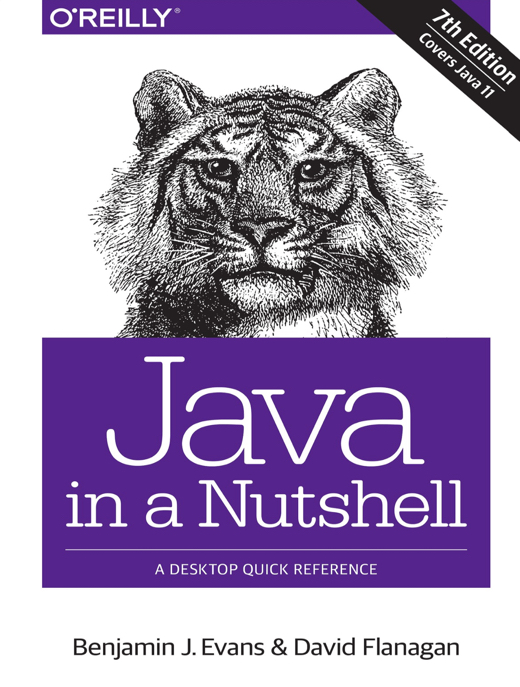Roaring into the JVM: A Developer’s Journey Through Java
Imagine you’re a software engineer parachuted into a sprawling enterprise system. Your task? Refactor a legacy Java 8 codebase to align with modern Java 11 standards. You sit at your desk, coffee steaming, IDE humming, staring down thousands of lines of brittle, procedural code.
Enter the tiger of technical references—Java in a Nutshell (7th Edition). This isn’t just a reference book. It’s a battle-tested field manual written for those who build systems, not just scripts. It doesn’t coddle. It arms you.
Chapter 1–2: The Ritual of the Runtime and the Language’s Skeleton
Your first turning point arrives when you stop seeing Java as a language—and start seeing it as a platform. Java isn’t just source code compiled to bytecode. It’s a living, breathing system: the Java Virtual Machine (JVM), the Java Language Specification (JLS), and the ecosystem of libraries and tooling.
The text makes one thing clear: the JVM is not just an interpreter—it’s a runtime optimizer. It watches your code. It profiles it. It decides what’s hot and replaces interpreted bytecode with optimized machine code via JIT compilation. It’s like having a compiler that whispers in your ear mid-execution: “You call this loop often—I’ll make it faster.”
Then you realize why Java was designed with what critics call verbosity. The book defends the much-maligned Object o = new Object(); repetition as part of Java’s readability and runtime safety. With the arrival of var and lambda expressions, though, verbosity is tamed—but never neutered.
Chapters 3–5: Objects, Inheritance, and the Architecture of Thought
Next, you enter the object-oriented citadel. But the text refuses to let you fall into old traps.
Here’s the most subversive idea it offers: “Subclassing is not always your friend.” Yes, Java supports inheritance, but it nudges you toward composition over inheritance. It forces you to confront the limitations of single inheritance, and pushes you toward interfaces, default methods, and even traits-like structures via Java 8’s functional enhancements.
It guides you through encapsulation as a state guardrail, not a formality. Fields are private because the state model must be protected. The JVM expects your objects to be in a legal state when methods start and finish. The diagram on page 309 (Program State Transitions) shows that objects live, transition, and die—much like real entities. That’s not theory. That’s runtime enforcement.
The singleton, the decorator pattern, and safe programming models are presented not as academic curiosities, but as survival patterns for real-world systems. The book’s philosophy? Every public method is an entry point to chaos unless you actively defend against it.
Chapter 6: Memory and the Dance of the Garbage Collector
Here’s where the magic meets the metal. The book demystifies memory management without waving hands or chanting “GC just works.”
It tells you what JVM actually does: mark-and-sweep, generational garbage collection, and the trade-offs of object lifetime. You learn that GC roots, heap segmentation, and object reachability aren’t abstract—they’re the foundation for writing performant Java code under load.
The insight is jarring but necessary: “Memory leaks in Java aren’t impossible—they’re just different.” You don’t leak memory by forgetting to free it. You leak memory by keeping unnecessary references alive. That’s more insidious—and the JVM won’t save you from it.
Chapters 4–5: The Type System Evolves—and So Must You
This is where your worldview as a Java developer fractures and reforms. With the arrival of generics, wildcards, bounded type parameters, and type erasure, you’re asked to navigate a type system that’s static, yet dynamic in execution.
It’s a controlled contradiction: “Java types vanish at runtime, but they must be correct at compile time.”
The book also guides you through the @FunctionalInterface revelation: that lambdas are not sugar—they’re anonymous methods implemented as invokedynamic bytecode with method handles under the hood. You’re not writing JavaScript-style closures. You’re writing optimized, type-safe function objects.
Add in method references, default methods, streams, and you realize: Java isn’t object-oriented anymore. It’s optionally functional—a language caught mid-morph, stretching between OOP and FP like some hybrid creature.
The Mental Model Shift
What does this book teach you that other Java texts don’t?
It builds a mental model of Java as a living ecosystem—one where:
- The JVM is watching.
- The type system is a contract.
- Memory is political.
- Threads and objects are dangerous unless tamed.
- And methods are border checkpoints to consistency.
By the end, you don’t just “know Java 11.” You understand why it works the way it does, and what that means for your design decisions.
